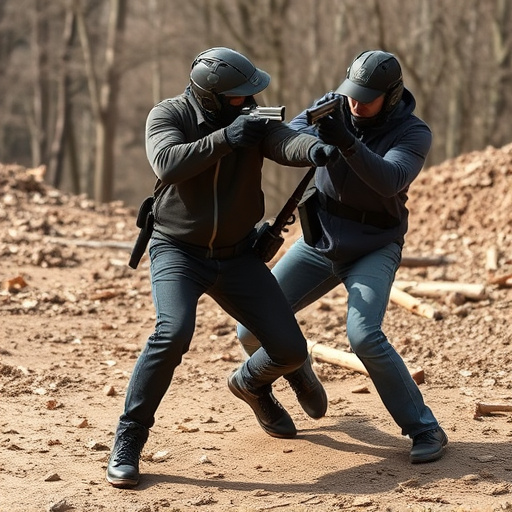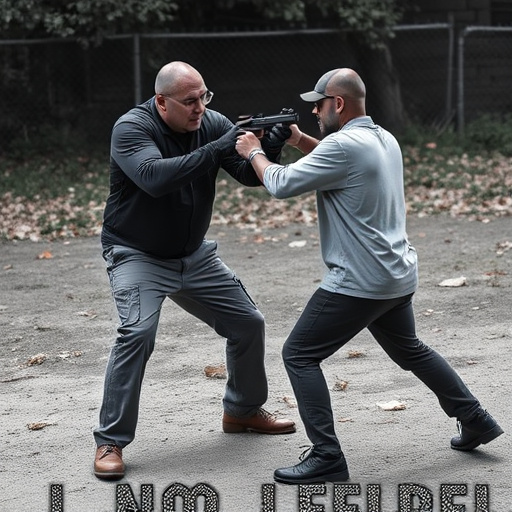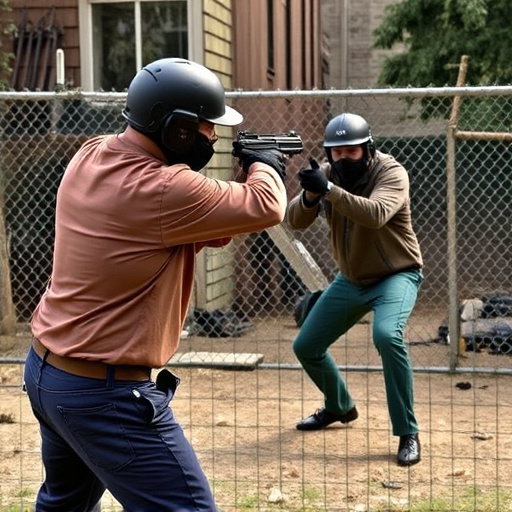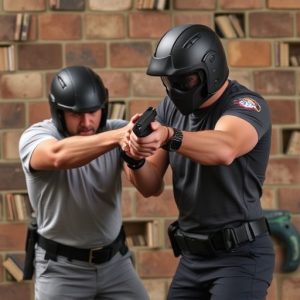Unveiling Safety with Nighttime Stun Gun Spread Pattern Analysis
Understanding how electrical current interacts with materials is essential for personal safety, espe…….
Understanding how electrical current interacts with materials is essential for personal safety, especially when using best stun guns designed for nighttime situations. By analyzing factors like resistance, conductivity, and material type, users can optimize the effectiveness of these devices. In low-light scenarios, knowing the spread pattern of electrical current helps in selecting stun guns that deliver precise, wide-ranging shocks to disable aggressors quickly. This knowledge enhances safety and could save lives in real-world situations, particularly when using the best stun guns for personal protection at night.
- Understanding Electrical Current and Its Behavior
- Why Spread Pattern Analysis is Crucial for Safety
- Key Factors Influencing Current Spread Patterns
- Selecting the Right Stun Guns Based on Spread Analysis
Understanding Electrical Current and Its Behavior

Electrical current, a fundamental force in our modern world, exhibits intricate patterns and behaviors when it flows through different mediums. Understanding how current spreads and interacts with various materials is crucial, especially in scenarios demanding personal protection, such as the use of best stun guns designed for nighttime situations. At night, visibility may be limited, but electrical currents can still leave distinct traces on conductive surfaces.
The behavior of current depends on factors like resistance, conductivity, and the specific material it encounters. In the context of self-defense tools like stun guns, knowing how electricity travels through different body parts or materials can provide insights into their effectiveness. This knowledge empowers individuals to make informed choices when selecting protection, ensuring that the electrical current’s path and impact are optimized for safety and immobilization.
Why Spread Pattern Analysis is Crucial for Safety

In the context of personal protection, especially during low-light or nocturnal situations, understanding the spread pattern of electrical current is paramount for safety. When considering the best stun guns for personal protection at night, spread pattern analysis becomes a critical factor in evaluating their effectiveness. The ability to disable or immobilize an aggressor depends on the stun gun’s capacity to deliver a precise and wide-ranging electric shock. A thorough understanding of how current flows and disperses from the device ensures users can make informed decisions when facing potential threats, maximizing the safety and efficacy of their chosen self-defense tool.
By examining the spread pattern, users can assess the stun gun’s ability to deliver a strong and consistent shock over a sufficient area, which is crucial for neutralizing an attacker quickly. This analysis also helps in identifying potential risks, such as areas where the current might not reach effectively, ensuring that users are fully aware of their device’s capabilities and limitations. Such knowledge can prove invaluable in real-world scenarios, enhancing personal safety and potentially saving lives.
Key Factors Influencing Current Spread Patterns

In understanding electrical current spread patterns, several key factors play a significant role. One critical aspect is the type and quality of conductive materials involved. Different conductors exhibit varying resistivities, which directly impact how current flows through them. For instance, metals like copper are excellent conductors due to their low resistivity, allowing for efficient current transmission. In contrast, insulators, such as rubber or plastic, restrict current flow, leading to distinct spread patterns.
Another essential factor is the shape and size of the conductive elements. The geometry of components, such as wires or plates, can significantly alter current distribution. Curved or narrow conductors might cause current concentration in specific areas, while wide, flat surfaces tend to distribute current more evenly. Additionally, external factors like temperature and humidity can influence these patterns, especially in real-world applications like personal protection equipment, such as the best stun guns designed for night use, where reliable current spread is vital for effectiveness and safety.
Selecting the Right Stun Guns Based on Spread Analysis

When considering the best stun guns for personal protection, especially for nighttime use, understanding the spread pattern analysis is key. This involves evaluating the distribution and intensity of the electrical current emitted by the device, which can greatly impact its effectiveness. By studying how the current spreads, users can make informed decisions about the stun gun’s range, power, and optimal usage scenarios.
For personal protection at night, where visibility might be limited, choosing a stun gun with a more focused and concentrated current spread can be advantageous. This ensures that the energy is delivered precisely to the target area, even in low-light conditions. Such stun guns are designed to maximize stun potential within a shorter range, providing users with a powerful yet controlled self-defense tool.
Electrical current spread pattern analysis plays a vital role in enhancing personal safety, especially during low-light conditions. By understanding how current spreads, individuals can make informed decisions when choosing the best stun guns for their protection. Factors like electrode design and material influence the spread, ensuring maximum effectiveness against potential threats. When navigating the market for top-rated stun guns suitable for nighttime use, considering these patterns is essential to ensure a safe and effective self-defense tool.


